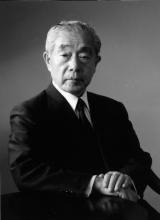Science
News
16 Feb 2021
Holger F. Hofmann, professor in the Graduate School of Advanced Science and Engineering, Hiroshima University, published a method to experimentally demonstrate the precision of quantum measurements on Feb. 3 in Physical Review Research. His work has implications for our fundamental understanding of physics at the level of individual quantum objects.
12 Feb 2021
In a study published in Nature Communications, cancer researchers at Kanazawa University identify mechanisms by which malignant tumor cells extend their toxicity to distinct cell types and in turn help them spread.
12 Feb 2021
This article is an excerpt from the Hokkaido University research magazine “Tackling Global Issues vol.3 Fighting the menace of zoonosis" (link below).

11 Feb 2021
ARN's February newsletter features research about catalyzing plastic recycling, the mental health toll of the COVID-19 pandemic, antiperovskites and oolong tea. In honor of International Day of Women and Girls in Science, we also have tips for addressing gender bias in STEM communications, and inspirational stories about pioneering female scientists from our Giants in History series. Read on...
10 Feb 2021
To celebrate International Day of Women and Girls in Science on Feb. 11, we are highlighting Giants in History - Asia's Women in Science, as well as tips for boosting women's voices in science communication and other organizations working to support women in research.
10 Feb 2021
Researchers at The University of Tokyo discover a new law about how the complex network of phase-separated structures grows with time, which may lead to more efficient batteries and industrial catalysts
10 Feb 2021
Scientists have found catalysts that improve an important industrial reaction and make it more eco-friendly.
09 Feb 2021
Tissue stem cells can self-renew and differentiate, supplying cells necessary for tissues at various developmental stages. However, detailed analysis in vivo is difficult, so the molecular mechanisms underlying the stemness of gastric tissue stem cells have remained a mystery. Here, by using organoids that mimic tissue structure and function in vivo and GeCKO screening to inactivate arbitrary genes, Alk, Bclaf3 and Prkra have been identified as genes regulating stemness.
08 Feb 2021
Betelgeuse is normally one of the brightest, most recognizable stars of the winter sky, marking the left shoulder of the constellation Orion. But lately, it has been behaving strangely: an unprecedentedly large drop in its brightness has been observed in early 2020 (Figure 1), which has prompted speculation that Betelgeuse may be about to explode.
08 Feb 2021
Researchers from Hong Kong Baptist University (HKBU) and the Faculty of Medicine at The Chinese University of Hong Kong (CU Medicine) have jointly developed the Spermine Risk Score which, coupled with the use of a urine test, provides a non-invasive and more reliable method for the diagnosis of prostate cancer. In a study conducted by the researchers, about 37% of the patients, who were ultimately found to have no prostate cancer, can avoid undergoing a prostate biopsy procedure.
04 Feb 2021
This article is an excerpt from the Hokkaido University research magazine “Tackling Global Issues vol.3 Fighting the menace of zoonosis" (link below).
04 Feb 2021
Cells replicate their genetic material and divide into two identical clones to perpetuate life. Some cells pause in the process with a single, undivided nucleus. When the cell resumes division after such a pause, the nucleus can become caught in the fissure, splitting violently, and killing both cells. But that is not always the case. Researchers from Hiroshima University in Japan are starting to understand how active nuclear displacement rescues cell death.
28 Jan 2021
A tick saliva study reveals immune responses that could lead to better protection for cattle.
24 Jan 2021
Researchers at Kanazawa University report in Clinical Cancer Research that in the most common type of lung cancer, certain secondary mutations occurring with another gene alteration known as ALK make the efficacy of alectinib, an otherwise commonly used drug for treating lung cancer, become unfavorable. Combining alectinib with another kind of drug can overcome this adverse effect, however.
22 Jan 2021
Scientists at Hokkaido University and Chiba University have developed simultaneous triploid and hexaploid varieties of Haemanthus albiflos by the application of endosperm culture, thus extending the use of this technique.
21 Jan 2021
A team of scientists in Japan has developed a novel method to induce stem cell generation from the blood samples of dogs. Through this technique, the scientists hope to advance regenerative therapies in veterinary medicine. This would mean that, in the near future, veterinarians might be able to reverse conditions in dogs that were previously thought incurable.
20 Jan 2021
Patients with motor dysfunctions are on the rise across Japan as its population continues to age. A Tohoku University researcher has developed a new method of rehabilitation using virtual reality to increase the sense of agency over our body and aid motor skills.
18 Jan 2021
Researchers at Osaka City University use quantum superposition states and Bayesian inference to create a quantum algorithm, easily executable on quantum computers, that accurately and directly calculates energy differences between the electronic ground and excited spin states of molecular systems in polynomial time.
12 Jan 2021
An atomic switch is bringing us closer to highly effective solid-state batteries for electric vehicles.
11 Jan 2021
Researchers at Kanazawa University report in Communications Chemistry that a molecule known as pillar[6]arene can form a host–guest compound with a cancer-associated metabolite. The phenomenon can be used to efficiently detect the metabolite in crude biological samples, which is important for preventing and treating metabolic syndrome and associated pathologies.
07 Jan 2021
Factor-pooling by ribosomes caught on video using state-of-art high-speed atomic force microscopy technology.
28 Dec 2020
Kanazawa University’s pioneering high-speed atomic force microscope technology has now shed light on the structure and dynamics of some of life’s most ubiquitous and inscrutable molecules – intrinsically disordered proteins. The study is reported in Nature Nanotechnology.
28 Dec 2020
Investigations of a cellular protein have uncovered a possible link with schizophrenia.
28 Dec 2020
iCeMS scientists have revealed how a transporter protein twists and squeezes compounds out of cells, including chemotherapy drugs from some cancer cells.
25 Dec 2020
In their paper, the team described a novel scenario for PBH formation and showed that the black holes from the “multiverse” scenario can be found using the Hyper Suprime-Cam (HSC) of the 8.2m Subaru Telescope, a gigantic digital camera—the management of which Kavli IPMU has played a crucial role—near the 4,200 meter summit of Mt. Mauna Kea in Hawaii.
24 Dec 2020
Tohoku University scientists have, for the first time, provided experimental evidence that cell stickiness helps them stay sorted within correct compartments during development. How tightly cells clump together, known as cell adhesion, appears to be enabled by a protein better known for its role in the immune system. The findings were detailed in the journal Nature Communications.
23 Dec 2020
Osaka City University scientists have developed mathematical formulas to describe the current and fluctuations of strongly correlated electrons in quantum dots. Their theoretical predictions could soon be tested experimentally.
23 Dec 2020
A transporter protein that regulates cell membrane cholesterol likely played an important role in vertebrate evolution, according to a review published by iCeMS researchers in the journal FEBS Letters.
22 Dec 2020
Atomic force microscopy (AFM) allows to obtain images and movies showing proteins at work, however with limited resolution. The developed BioAFMviewer software opens the opportunity to use the enormous amount of available high-resolution protein data to better understand experiments. Within an interactive interface with rich functionality, the BioAFMviewer computationally emulates tip-scanning of any biomolecular structure to generate simulated AFM graphics and movies. They greatly help in the interpretation of e.g., high-speed AFM observations.
21 Dec 2020
In the 1970s, physicists uncovered a problem with the Standard Model of particle physics—the theory that describes three of the four fundamental forces of nature (electromagnetic, weak, and strong interactions; the fourth is gravity). They found that, while the theory predicts that a symmetry between particles and forces in our Universe and a mirror version should be broken, the experiments say otherwise. This mismatch between theory and observations is dubbed “the Strong CP problem”—CP stands for Charge+Parity. What is the CP problem, and why has it puzzled scientists for almost half a century?
Events

06 Jun 2006
The Conference on Natural Resources in the Tropics is designed to bring out the latest R & D findings in the utilization and management of natural resources particularly in ASEAN countries to the private sector, researchers, academicians, managers of resources, industrialists and policy makers.

06 Aug 2006
By 2006 the tangible impact on human health of the Human Genome Project and advances in genomic science and biotechnology will make attendance at the 11th Congress essential for health professionals and genetic scientists alike.

19 Jun 2006
bioLOGIC Europe is firmly established as Europe’s most prestigious series of strategic biomanufacturing conferences

05 Jun 2006
This conference is where the ideas, intelligence and relationships develop the business models of the future

20 Mar 2006
It is a knowledge experience, business meeting and marketplace from all parts of the world. A unique chance to meet, learn from and network with the Directors of the entire global industry in one place.

23 Mar 2006
The meeting is organized within the theme of low cost technology for water treatment, and also preserving the environment by improving water management policies and reducing water pollution through adequate water treatment technologies.

14 Mar 2006
Incoroprating Seminar on 'Transgenic Plants: A Challenge to Natural Farming and Nature Survival' on March 14, 2006.

14 Jan 2006
Site characterisation traditionally relies on closely spaced boreholes, which is relatively expensive when compared to the use of subsurface geophysics used in conjunction with a few boreholes.

23 Jan 2007
Call for proposals for Special Sessions in now open

02 Dec 2005
Theme: Advanced technologies for building sustainable society

17 Dec 2005
Krabi Town will also play host to a series of international meetings on waterbird and wetland strategic planning and conservation between 15-20
December

14 Jan 2006
This event is Free of charge and will be conducted in English

25 Feb 2006
Human and Nature – Working Together for Sustainable Development of Dry Lands

29 Nov 2005
The CWANA region covers an area of 1.7 billion ha with an estimated population of over 700 million people and a huge potential for regional seed market.

29 Nov 2005
A host of dignitaries, including the Prime Minister of Jordan, will join TWAS members to discuss the state of science in the developing world.

21 Nov 2005
The meeting is which will focus on "Women’s Impact on Science and Technology in the New Millennium" is expected to attract more than 200 women scientists from around the world.

16 Nov 2005
This is expected to be the most productive COP in the convention’s history. The Conference agenda is underpinned by a common feeling of urgency to meet objectives to halt or reduce global biodiversity losses by 2010.

28 Nov 2005
Among the sub-themes include: sustainable development and water management, public awareness, water education, socio-economic and legal issues, the environment, engineering, modelling and traditional water management

19 Sep 2005
Training course on "Bioinformatics and Functional Genomics of Insect Vectors of Human Diseases"

03 Oct 2005
Training Course on Bioinformatics Applied to Tropical Diseases in Southeast Asia

06 Jul 2005
This event provides a good opportunity to review the contribution to health that pesticide make, as well as the safety concerns that consumers in Asia have about pest control chemicals

03 Jul 2005
3rd International Conference on Materials for Advanced Technologies (ICMAT2005) and the International Union of Materials Research Societies' 9th International Conference on Advanced Materials (ICAM2005)

07 Dec 2005
Nutrigenomics is an exciting new scientific frontier integrating genomic technologies with nutrition knowledge. The Conference will address the relevance of nutrigenomics to meet public health needs of Asian populations.

23 Oct 2005
International Union of Radio Science, universally referred to as URSI (Union Radio-Scientifique Internationale), is one of 25 Scientific Unions, which adhere to International Council for Science (ICSU).

13 Dec 2005
The objective of this workshop is to bring together researchers to promote interactions and discussions on selected aspects of the physics and technology of semiconductor devices.

04 Dec 2005
The 17th Asia Pacific Microwave Conference (APMC 2005) will be held in the Suzhou International Conference Hall, Suzhou, China, in Dec. 4-7, 2005.

05 Sep 2005
This conference will bridge computational sciences and immunology with the theme: "Nurturing Immune-Based Computing for Wealth Creation and Technology Advancement"

22 Aug 2005
This International Symposium emphasises the usage of GIS as a tool for conducting spatial analyses and for aquatic sciences.

20 Aug 2005
This International conference will address issues on the rapid urbanisation in Asia including Urban development and process, Land use change, Urban regeneration, Population, Sustainable cities, World city development, Globalising cities in Asia
Giants in history
Chinese biochemist Chi Che Wang (1894 - 1979), one of the first Chinese women to study abroad, advanced to prominent research positions at American institutions including the University of Chicago and the Northwestern University Medical School.
Ruby Sakae Hirose (1904 – 1960) was a Japanese-American scientist whose research contributed significantly to our understanding of blood clotting, allergies and cancer.
Chinese electron microscopy specialist Li Fanghua (6 January 1932 – 24 January 2020) facilitated the high-resolution imaging of crystal structures by eliminating interference.
Sálim Moizuddin Abdul Ali (12 November 1896 – 20 June 1987), commonly referred to as the Birdman of India, was the first person to conduct systematic surveys of birds from across India.
Haisako Koyama (1916 – 1997) was a Japanese solar observer whose dedication to recording sunspots – cooler parts of the sun’s surface that appear dark – produced a sunspot record of historic importance.
Michiaki Takahashi (17 February 1928 – 16 December 2013) was a Japanese virologist who developed the first chickenpox vaccine.
Toshiko Yuasa (11 December 1909 – 1 February 1980) was the first Japanese female physicist whose research on radioactivity shed light on beta decay – the process in which an atom emits a beta particle (electron) and turns into a different element.
Angelita Castro Kelly (1942-2015) was the first female Mission Operations Manager (MOM) of NASA. She spearheaded and supervised the Earth Observing System missions during its developmental stage.
Malaysia’s first astrophysicist, Mazlan binti Othman (born 11 December 1951) was instrumental in launching the country’s first microsatellite, and in sending Malaysia’s first astronaut, Sheikh Muszaphar Shukor, into space.
Known as Mr. Natural Rubber, chemist and researcher B. C. Shekhar (17 November 1929 – 6 September 2006) introduced a number of technical innovations that helped put Malaysia’s natural rubber industry on the world map.
Shinichiro Tomonaga (31 March 1906 – 8 July 1979), together with Richard Feynman and Julian Schwinger, was awarded the Nobel Prize in Physics in 1965, for their contributions to advance the field of quantum electrodynamics. Tomonaga was also a strong proponent of peace, who actively campaigned against the proliferation of nuclear weapons and promoted the peaceful use of nuclear energy.
South Korean theoretical physicist Daniel Chonghan Hong (3 March 1956 – 6 July 2002) achieved fame in the public sphere through his research into the physics of popcorn.
Japanese chemist Kenichi Fukui (4 October 1918 – 9 January 1998) was the first Asian scientist to be awarded the Nobel Prize in Chemistry. Together with Roald Hoffman, he received this honour in 1981 for his independent research into the mechanisms of chemical reactions.
Chinese palaeontologist, archaeologist and anthropologist Pei Wenzhong (January 19, 1904 – September 18, 1982) is regarded as a founder of Chinese anthropology.
Physicist Narinder Singh Kapany (31 October 1926 – 4 December 2020) pioneered the use of optical fibres to transmit images, and founded several optical technology companies. Born in Punjab, India, he worked at a local optical instruments factory before moving to London for PhD studies at Imperial College. There, he devised a flexible fibrescope to convey images along bundles of glass fibres.
Japanese physicist Ukichiro Nakaya (1900-1962) made the world’s first artificial snowflakes. He started his research on snow crystals in the early 1930s at Hokkaido University, where there is an unlimited supply of natural snow in winter. By taking over 3,000 photographs, he established a classification of natural snow crystals and described their relationship with weather conditions.
The field of solid-state ionics originated in Europe, but Takehiko Takahashi of Nagoya University in Japan was the first to coin the term ‘solid ionics’ in 1967. ‘Solid-state ionics’ first appeared in 1971 in another of his papers, and was likely a play on ‘solid-state electronics’, another rapidly growing field at the time.
Charles Kuen Kao (Nov. 4, 1933 to Sept. 23, 2018) was an engineer who is regarded as the father of fibre optics. His work in the 1960s on long distance signal transmission using very pure glass fibres revolutionized telecommunications, enabling innovations such as the Internet.
Chika Kuroda (24 March 1884 – 8 November 1968) was a Japanese chemist whose research focussed on the structures of natural pigments.
Motoo Kimura (13 November 1924 – 13 November 1994) was a Japanese theoretical population geneticist who is best remembered for developing the neutral theory of molecular evolution.
Meghnad Saha (6 October 1893 – 16 February 1956) was an Indian astrophysicist best known for formulating the Saha ionization equation which describes the chemical and physical properties of stars.
Sir Jagadish Chandra Bose (30 November 1858 – 23 November 1937) was a scientist and inventor who contributed to a wide range of scientific fields such as physics, botany and biology.
Osamu Shimomura (27 August 1928 – 19 October 2018) was a Japanese organic chemist and marine biologist who dedicated his career to understanding how organisms emitted light.
Subrahmanyan Chandrasekhar (19 October 1910 – 21 August 1995) was an Indian astrophysicist who studied the structure and evolution of stars.
Joo-myung Seok (November 13, 1908 – October 6, 1950) was a Korean butterfly entomologist who made important contributions to the taxonomy of the native butterfly species in Korea.
Mathematician Maryam Mirzakhani (12 May 1977 – 14 July 2017) was the first and only woman and Iranian to date to win the Fields Medal in 2014 for her work on curved surfaces.
Sir Chandrasekhara Venkata Raman (7 November 1888 – 21 November 1970) was an Indian physicist who performed ground-breaking research in the field of light-scattering.
Mohammad Abdus Salam (29 January 1926 – 21 November 1996) was a theoretical physicist and the first Pakistani to receive a Nobel Prize in science.
Srinivasa Ramanujan (22 December 1887 – 26 April 1920) was a math prodigy and widely considered one of India’s greatest mathematicians. Despite having almost no formal training in mathematics, he made substantial contributions to mathematical analysis, number theory, infinite series and continued fractions.
Gopalasamudram Narayanan Ramachandran (8 October 1922 – 7 April 2001) is best known for developing the Ramachandran plot to understand the structure of short chains of amino acids, known as peptides.
Hitoshi Kihara (1893 – 1986) was one of the most famous Japanese geneticists of the 20th century. One of his most significant contributions was identifying sex chromosomes (X and Y) in flowering plants.
Chien-Shiung Wu (31 May 1912 – 16 February 1997) was an experimental physicist who made several important contributions to nuclear physics. Wu worked on the Manhattan Project – a top-secret program for the production of nuclear weapons during World War II and helped to develop a process for separating uranium into U235 and U238.
Meemann Chang (born 17 April 1936) is a Chinese palaeontologist who studied the fossils of ancient fish to understand the evolution of life. By examining fossils, she uncovered new insights on how vertebrates, animals with a backbone, migrated from the sea and became adapted to live on land.
Bibha Chowdhuri (1913 – 2 June 1991) was an Indian physicist who researched on particle physics and cosmic rays. In 1936, she was the only female to complete a M.Sc. degree at the University of Calcutta.
Lin Lanying (7 February 1918 – 4 March 2003) was a Chinese material engineer remembered for her contributions to the field of semiconductor and aerospace materials. Lanying was born into a family who did not believe in educating girls and she was not allowed to go to school.
Japanese geochemist Katsuko Saruhashi developed the first method and tools for measuring carbon dioxide in seawater


































































